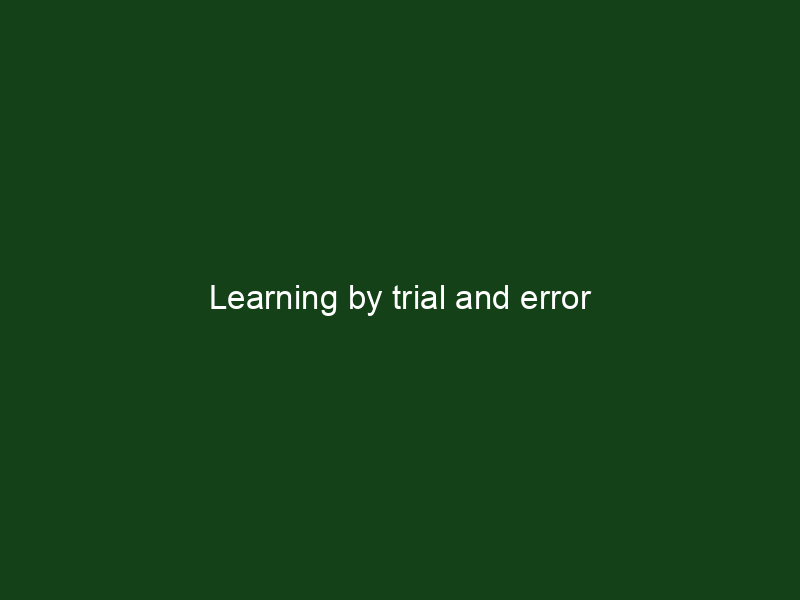Learning by trial and error is considered to be the slowest and most effort-intensive way to learn. When we try to handle hard tasks, it is often the most obvious way to learn. So if we can learn from our own experience effectively, we can handle increasingly more complex stuff.
Naive approach
Most people learn through trial-and-error. They begin studying in a certain way, observe what works, and then try to repeat those methods. This instinctive approach is rooted in millennia of evolution. Even if the resulting habits are not highly effective, they seem to work, or so we believe. We tend to become increasingly comfortable with repetitive activities. However, relying solely on our subjective experience while studying can lead to illusions of competence, where we believe we understand material better than we actually do. In essence, our trial-and-error approach often stops at the first workable solution, with only minor adjustments made thereafter.
Brute force approach
Occasionally when faced with hard problems, we need to test hundreds of possible ideas before we find something that works. The naive approach would probably capitulate quite soon. How many possible designs of the lightbulb were tested by Thomas Edison? How many people told Scott Adams he could not draw? How many paintings were painted by Van Gogh, and he did not sell a single one… Quite often we need to brace ourselves and continue doing the same thing over and over again, to fail and understand this is a matter of luck until we succeed. Our intuition tells us: you tried 5 times and got nothing, you should give up – and our willpower allows us try yet again. Clearly this “all or nothing” approach is a very risky strategy, and before we try it we should understand quite well that the risk is great and it may or may not pay off, and set up our own stopping rule so we do not stop too early or too late. From my experience, this is something which we greatly admire in other people when it works and greatly hate in ourselves when we fail and we do fail occasionally.
Triangulation approach
When making a tough shot a sniper can make small modifications and miss 3 times. If the misses are accurately measured, the next shot will include all modification and will hit. This method is often called “triangulation” and it is a smart way to do trial and error, a way that converges. We define 2 characteristics we want to play with [like speed and retention], make small changes around the optimal point, and we can decide which portfolio will work best for a short while. This is a great trick to play with repetitive productivity tasks such as memory/speedreading training, so you should use it as a part of your arsenal.
Empathy and simulations
Quite frankly, it is easier to try and err if someone else is doing the trying. There are several ways we can often achieve it using the power of our brain.
First, we can call from someone’s experience. Become a member of a group. Post your results and feedback results of others. Try to visualize the others’ experience. Do feel their pain – this way when you get stuck or hurt you will be more resilient.
Now do imagine what you will do in their place. How will you address the issue? How would your role model address it? Mirror neurons are a huge part of our brain, using them we do get smarter.
Run as many simulations as you can. Make others’ experience a part of your own. It is cheaper than failing your own tasks and almost as educational.
Make it right the first time
Do we need the trial and error process at all? Maybe we can do the right thing on our first try! You are a superlearner: read the relevant literature, search online, talk with people who ace the task. Be creative when you prepare. If you prepare properly, maybe your first time will be successful.

Get 4 Free Sample Chapters of the Key To Study Book
Get access to advanced training, and a selection of free apps to train your reading speed and visual memory

